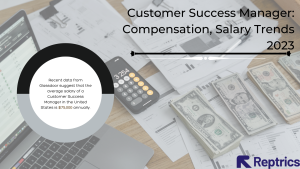This kind of evaluation shouldn’t be interpreted as a hasty response to anything you do. It entails painting a thorough picture of how your clients interact with your business.
Discovering what is most important to each client is also very important. This helps with long-term problem-solving and gives you perceptions of how people feel about your business.
An account health score is a number that represents a customer’s potential over the long run. A SaaS user experiences onboarding, retention, and upselling. Every stage requires some sort of health score so that you can assess the account’s condition and choose how to interact with it moving forward in the journey. We have seen that even after knowing the customer journey, CSMs tend to suck at a functional & actionable customer health score (CHS). But first what exactly is a customer health score?
Customer Health Score (CHS): What is it?
A client’s inclination to churn or remain a customer is predicted by a metric called customer health score. A measure that gives insight into what is happening in your client accounts early enough that you can be proactive is what Customer Health Score is. CHS formulations are frequently complex yet can also be simple.
The description is accurate, but since there is no industry standard for the Customer Health Score, some customer success teams might find it perplexing and overwhelming. Depending on the company and industry, factors, and the weighting methodology for CHS, it changes. It depends on what your customers consider to be successful.
3 Critical Mistakes with Customer Health Scoring
Healthy usage doesn’t always translate to healthy login rates.
As long as we’re talking about usage data, it’s customary to compare login rates to health usage in some way. A login rate of 80% is unquestionably an improvement over 25%, but what does that actually tell you about how well-integrated your product is with your customer’s business?
If you want to take into account usage data in your health score rather than take it at face value use major product differentiators or crucial user adoption moments (i.e. “once a user is able to accomplish x, they’ve actually shown high maturity/stickiness”). Having the option to enter a login and password and then press “Submit” does not signify either of those things.
By presuming that “using a seat” involves giving email permission, the concept of “seat usage” tangentially fails in a similar way. If none of those warm seats are actually utilizing the product in a healthy manner, your pricing model, which is only dependent on the number of seats used, is absolutely useless for anticipating churn. Healthy usage doesn’t always translate to healthy login rates.
Not every Alert is a Health Measure
It’s common to conceive of your alerting workflows as being connected in some way to health scores; the signals that alert us to potential renewal risks may be identical to, or comparable to, those indicating the general health of the client. But do not fall into that trap. Sometimes an alert can exist independently without changing your health scoring. Be cognizant of that fact.
Let’s consider a situation. A core principle of customer success is to increase time-to-value (TTV), hence a CSM would want to be informed when there are signs that this may be lagging. A value milestone was to be reached by X in 10 days, but it’s now been 20 days. Panic ensues!
But imagine instead that this is the result of a more extensive customer effort to first raise adoption and teach consumers. The warning is still important because it’s a signal that all parties should be aware of, but because it’s for the benefit of adoption as a whole, it doesn’t necessarily indicate a health issue.
Naturally, not all edge cases can or should be taken into account when developing a health score, but they do demonstrate that not all alerts call for a change in the customer health score.
Customer Health Scoring is an Iterative Journey
This last statement can only be taken at face value. Since customer health scoring is an iterative process by nature, there will always be room for improvement because both your product and your customers will continue to advance over time. Additionally, as you accumulate renewal data, you’ll have more data to compare in order to verify the correctness of your health scorecard, enabling you to make additional data-driven adjustments.
Simply, don’t set yourself up for failure by setting a high bar for accuracy right away. Use time and experience to your advantage; they are your friends. Let us dive into how you can improve existing health scores.
Improving Customer Health Scoring
Making informed assumptions is essentially the foundation of customer health rating. It is nevertheless important to explore how to make almost flawless forecasts. This section of the post will provide a discussion on it.
Therefore, let’s begin with the recommendations right now.
Select a goal you want to achieve using the customer success health score.
The goal your team is trying to achieve with the help of the customer success health score forms the basis of your customer health score. Do you desire to reduce churn? Do increasing renewal rates upsell probabilities be increased? The complete list? Select the result that matters the most to your team as the first step is crucial since it will establish the fundamental behavioral signals to examine later.
To enhance upsell opportunities, you might, for instance, track customer engagement levels with particular product features to find out which ones they value the most.
Your customer success managers and the rest of the org must first be informed about your rating system. Your CS team will be able to detect which customers may need more attention if your customer health rating system is easy to understand and utilize by all team members. Additionally, keep an eye on relationship signals with the customer account to see if they would follow through if you offered them to purchase a new service.
Each business will uniquely select this outcome. One team may have decided to go with the potential for a customer to renew their membership.
When a team notices a high churn rate, they could decide to concentrate on the possibility that a customer would depart. The conditions surrounding your business and the goals of your team will greatly influence this decision.
Among the initial requirements of this decision is having a pulse on your clients. Without knowing your customers’ purchase cycles, how they interact with your product, and the reasoning behind your team’s selected target outcome, you won’t be able to accurately image their health.
Find your best clients
Your brand’s brand supporters are your “healthiest” clients. They are thrilled to inform their friends and coworkers about your business and what you have to offer because they adore it. The lifetime value of brand advocates is higher, and they also spend more.
Your key to development is to maintain these bonds. Knowing your top clients will enable you to choose those to thank for their enthusiasm and loyalty.
A better internal communication strategy
The diverse interpretations from people within your company are one of the main mistakes when first introducing customer health scores. For instance, the value of a number and color will be perceived differently. Colors could have unintended meanings depending on where you are in the globe. Sales may see an opportunity when Finance sees a tragedy.
Make sure you include a few slides on the fundamentals of customer health scores in every internal QBR, sales meeting, and other internal meeting. We do not devote enough effort to doing this at the beginning of a rollout or a change.
TL;DR
- Customer health scores don’t have a universal formula that applies to everyone. Choose the health score components that are appropriate for your company and reflect your product, such as product usage, support tickets, etc. If a competitor has an entirely distinct offering, there is no use in imitating what they do.
- Embrace automation. A great CS tool can be a savior when it comes to your health score approach. Health scores must be constantly tracked and updated to reflect new developments. An integrated tech stack is the most effective method to do this.
- Speak with your clients. Above all, health ratings aim to foretell future behavioral trends. But to take advantage of this measure, you must speak with and listen to your clients directly.









